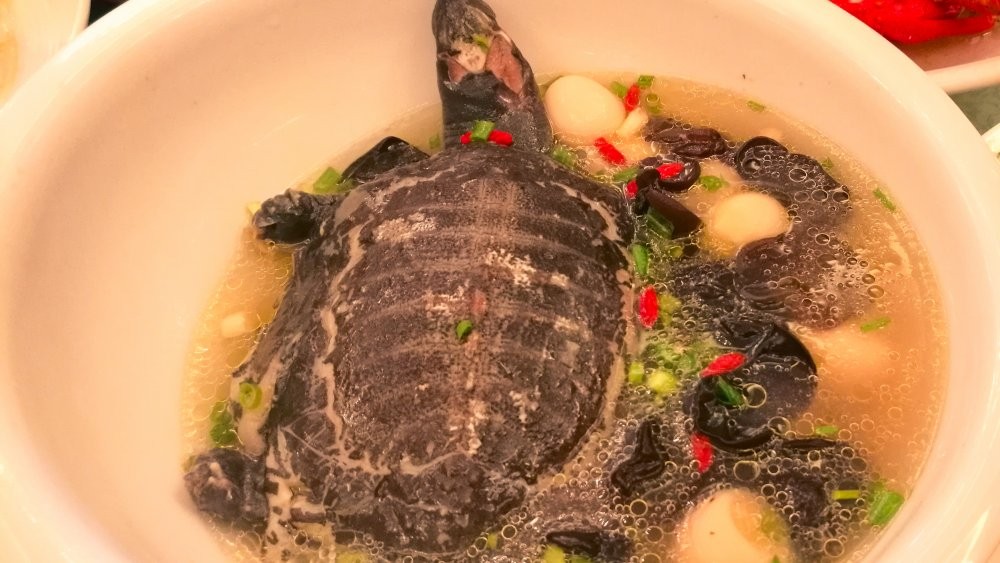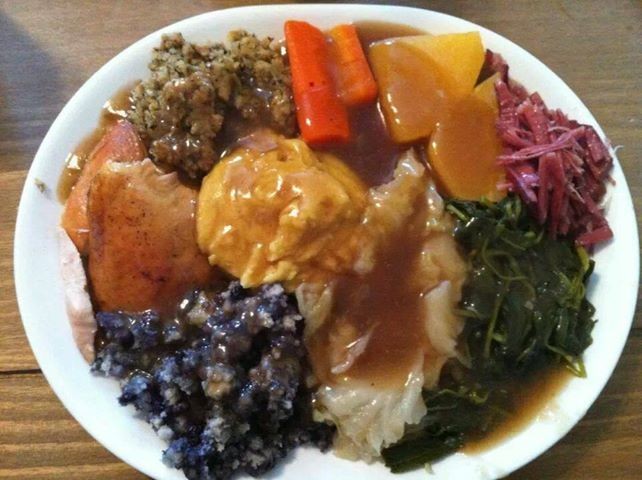Top 20 Weirdest Foods In The United States
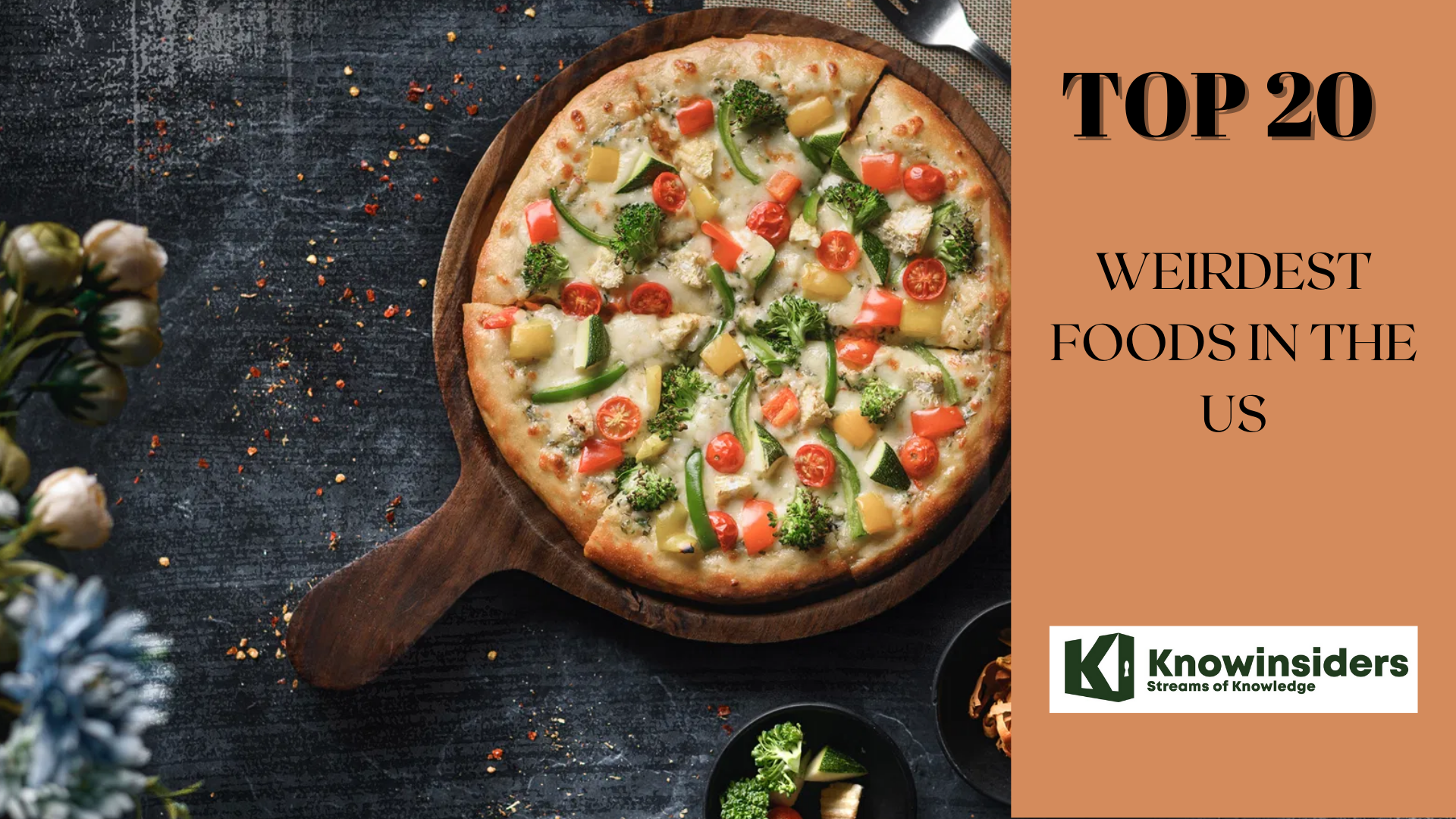 |
1. Crawfish
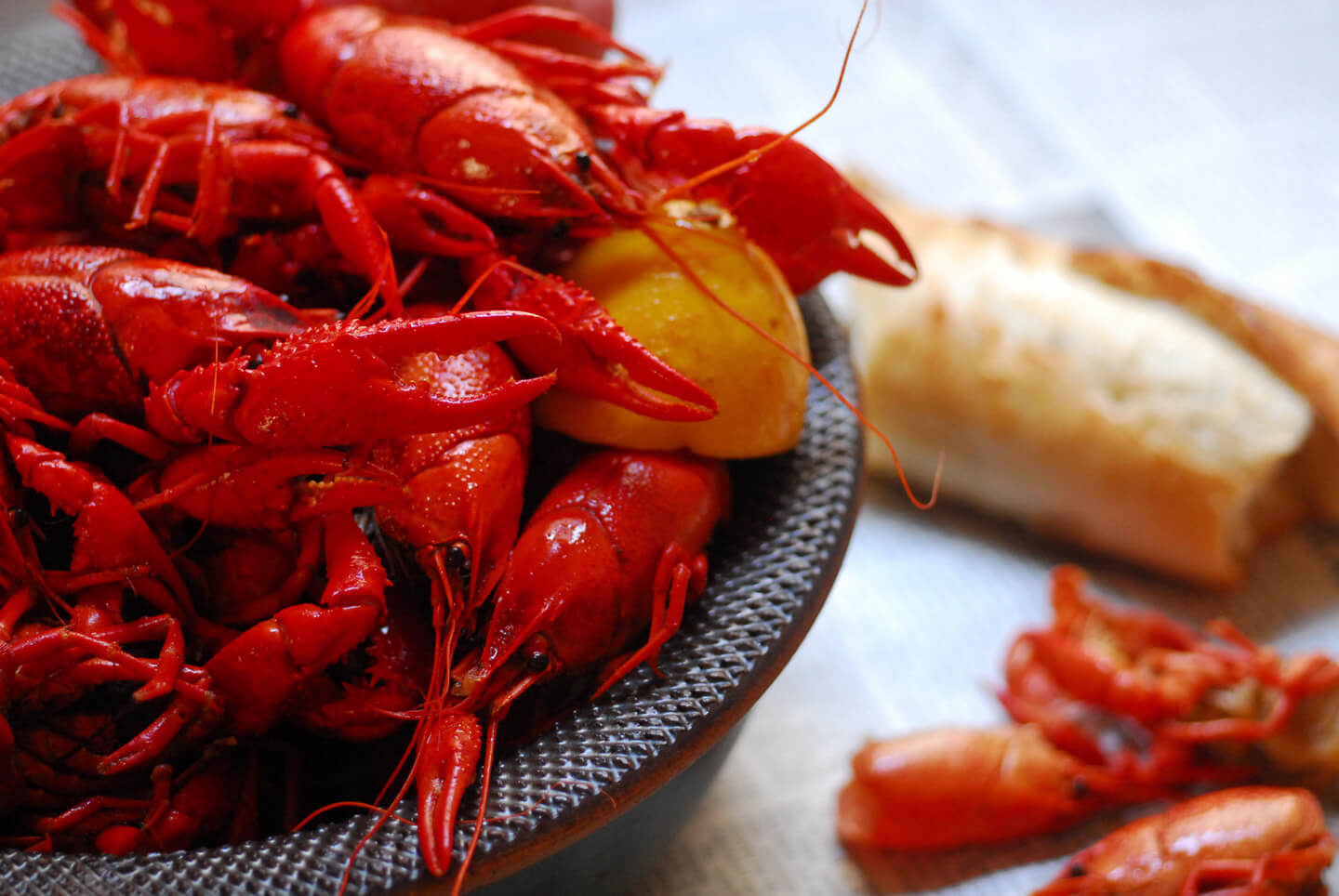 |
| Photo: Homesick Texan |
Any food that is affectionately referred to as mudbugs has to be on this list. A staple in most Louisianian homes, these little creatures are eaten by the pounds! They are boiled in a large pot with a variety of spices and other ingredients, such as potatoes, corn, and sausage. The way one makes crawfish depends on personal taste. Crawfish boils are popular events throughout crawfish season (which is mid-November through mid-August), and are pretty much cook-out style parties, with crawfish as the main course. If you attend one, be sure to have plenty of napkins on hand, and maybe some spare clothes; you use your hands when you eat this dish, which can mean that it can get pretty messy.
2. Scrapple
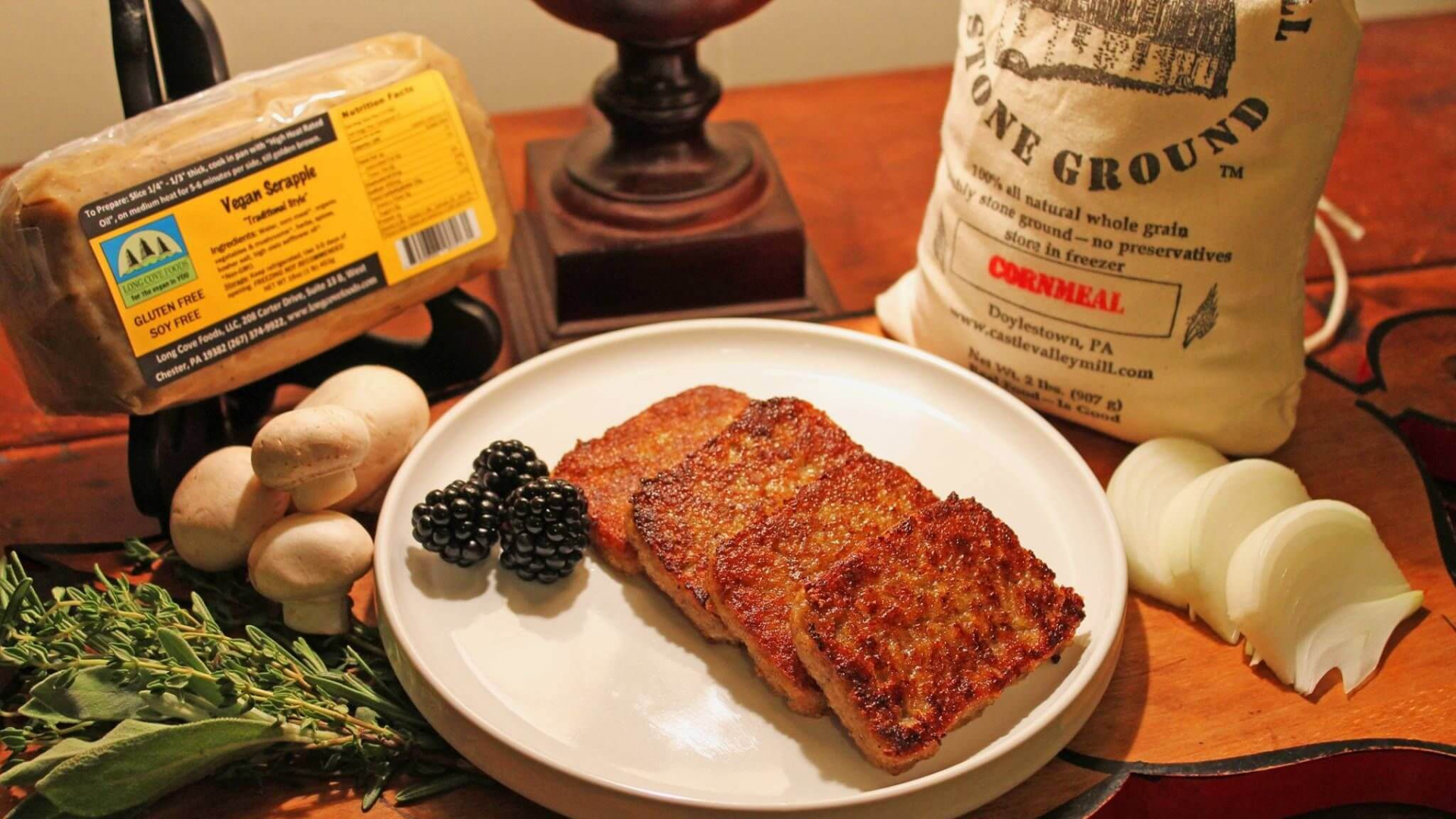 |
| Photo: LIVEKINDLY |
If you've never seen this on the menu at your local diner, you most likely do not live in Eastern Pennsylvania, Delaware or Maryland. It's traditionally a breakfast meat, and can be served with an egg on top, or with ketchup, jelly, apple sauces and other relishes. After the most commonly eaten cuts of the pig are removed (bacon, ham and chops), the remaining parts, such as the skin, heart, liver, brain and tongue, are salted and spiced, combined with cornmeal and buckwheat flour, and cooked on the stove top for hours. It's then refrigerated in a loaf pan to later be fried and served up as a dish called scrapple. It was created in order to not waste any of the meat of the pig.
The scrapple universe is large. In Cincinnati (and Northern Kentucky) there's goetta, made with oats instead of cornmeal. In the Carolinas, there's livermush (and liver pudding). Basically, if there are people of German descent (the "Dutch" in "Pennsylvania Dutch" is said to be an Anglicization of "deutsch") some pigs, and grain, you're going to find a loaf that mixes up the two. The trend also extends to other cultures, and to sausage: Cajun and French boudin, English black pudding, and Scottish haggis are all scrapple kin.
3. Watergate Salad
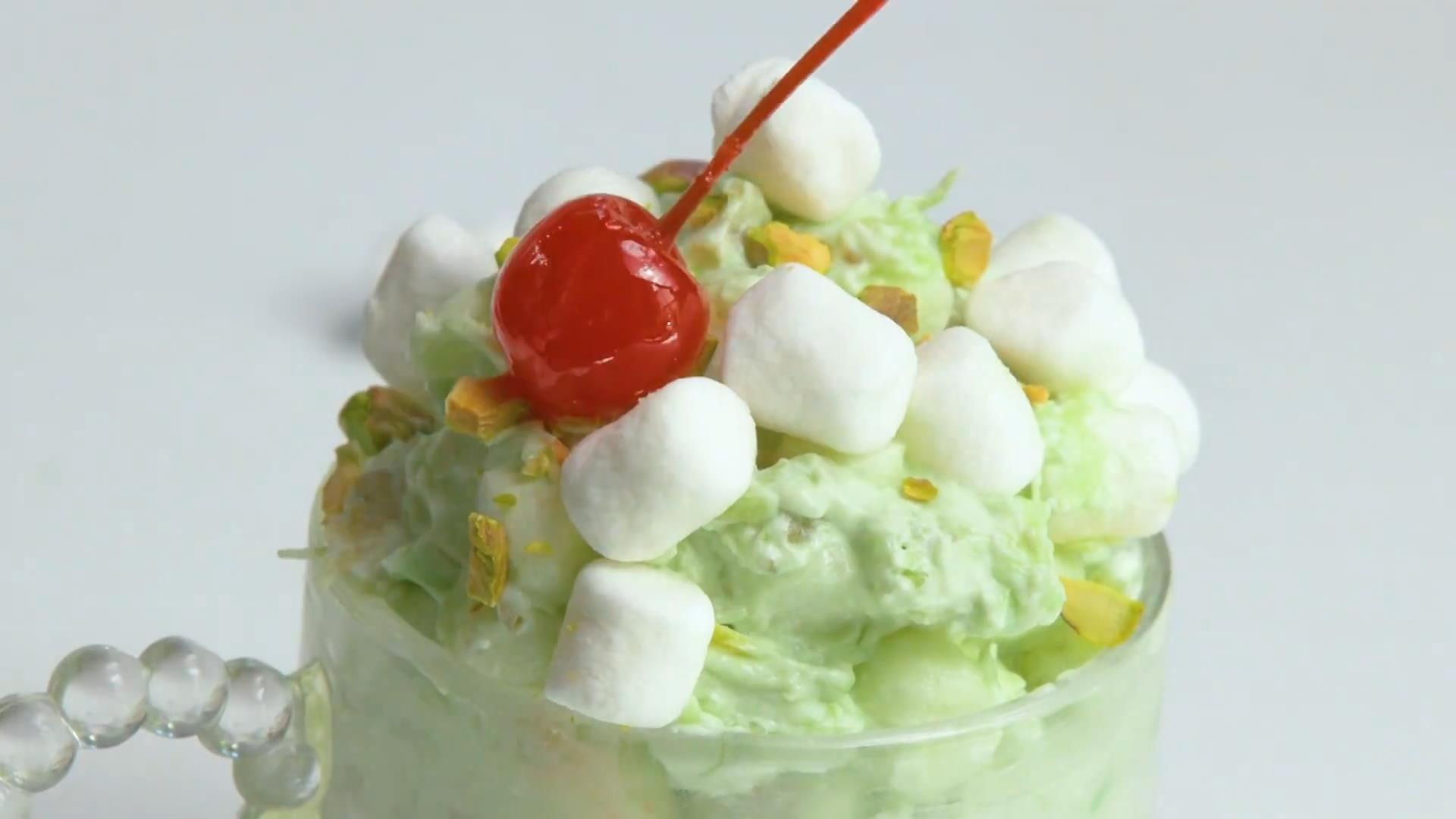 |
| Photo: Allrecipes |
This is definitely not your typical healthy salad. In fact, it is served as a dessert. Also referred to as Pistachio Delight, Shut The Gate Salad, Green Goop, Green Fluff, or Green Stuff, this green-colored dish is popular in the Upper Midwest, especially for holidays. It's comprised of pistachio instant pudding, crushed pineapple, chopped walnuts, Cool Whip, and mini marshmallows. Originally, in the mid-'80s, Kraft put a recipe on its JELL-O Pistachio Flavored Pudding box called Pistachio Pineapple Delight, which was the same recipe as Watergate Salad, minus the marshmallows. Soon people began referring to it as Watergate Salad, and the marshmallows were added. No one really knows how the name came about, but it's stuck ever since.
4. Rocky Mountain Oysters
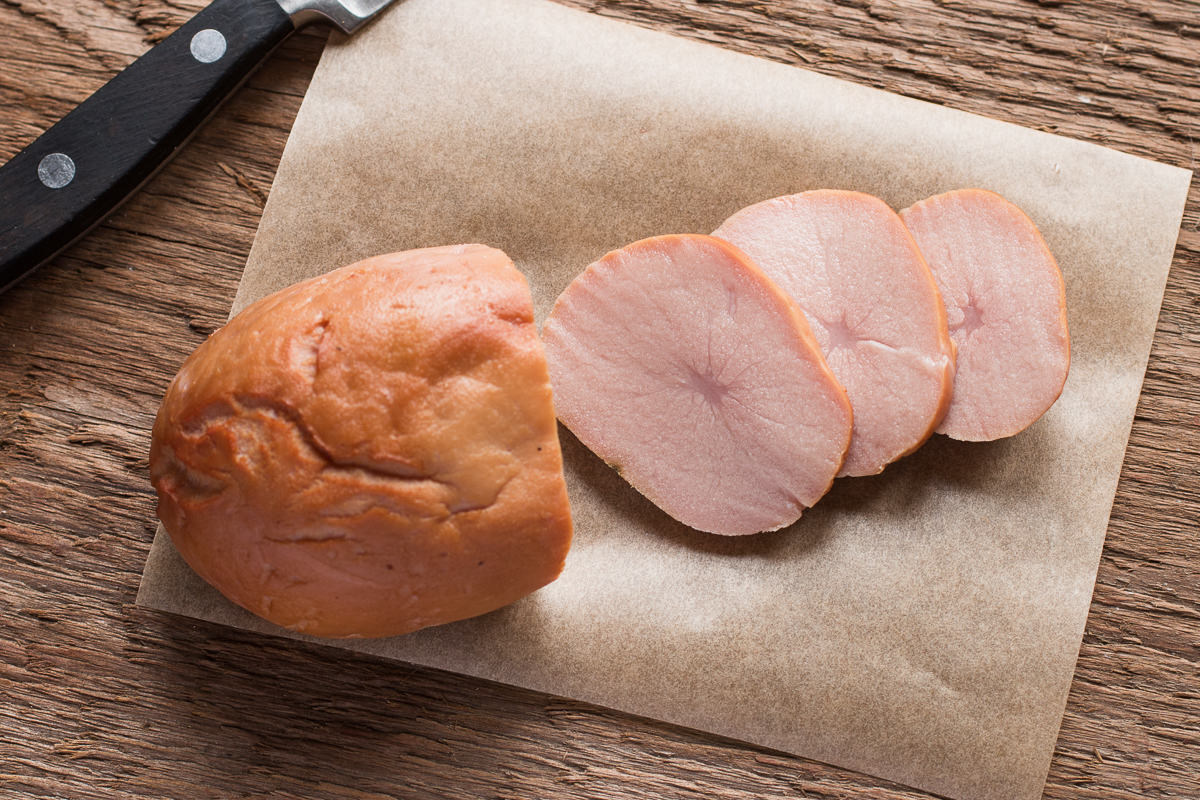 |
| Photo: Forager Chef |
They are also known as prairie oysters, Montana tender grains, cowboy caviar, swinging beef, and calf fries – are true Western delicacies. They are that part of the bull that is removed in his youth so that he may thereby be more tractable, grow meatier, and behave less masculine. When the calves are branded, the testicles are cut off and thrown in a bucket of water. They are then peeled, washed, rolled in flour and pepper, and fried in a pan.
They are considered to be quite a delicacy. Like other organ meats, testicles may be cooked in a variety of ways – deep-fried whole, cut into broad, thin slices, or marinated. At roundups in the old West, cowboys and ranch hands tossed the meat on a hot iron stove.
Eating animal genitalia dates back to ancient Roman times, when it was believed that eating a healthy animal’s organ might correct some ailment in the corresponding human organ of the male person eating it. Because of this belief, the practice continues to the present day, especially in Asia, where animal genitalia are considered an aphrodisiac.
The rugged folks of the Rocky Mountain region are not squeamish. Testicle festivals are held every spring and fall in Montana. These festivals can be very rowdy and may not be the best place to bring your children. If you can not get to a festival, many restaurants and bars in Montana, Idaho, and Kansas serve Rocky Mountain oysters all year long and with less fanfare.
5. Spam Musubi
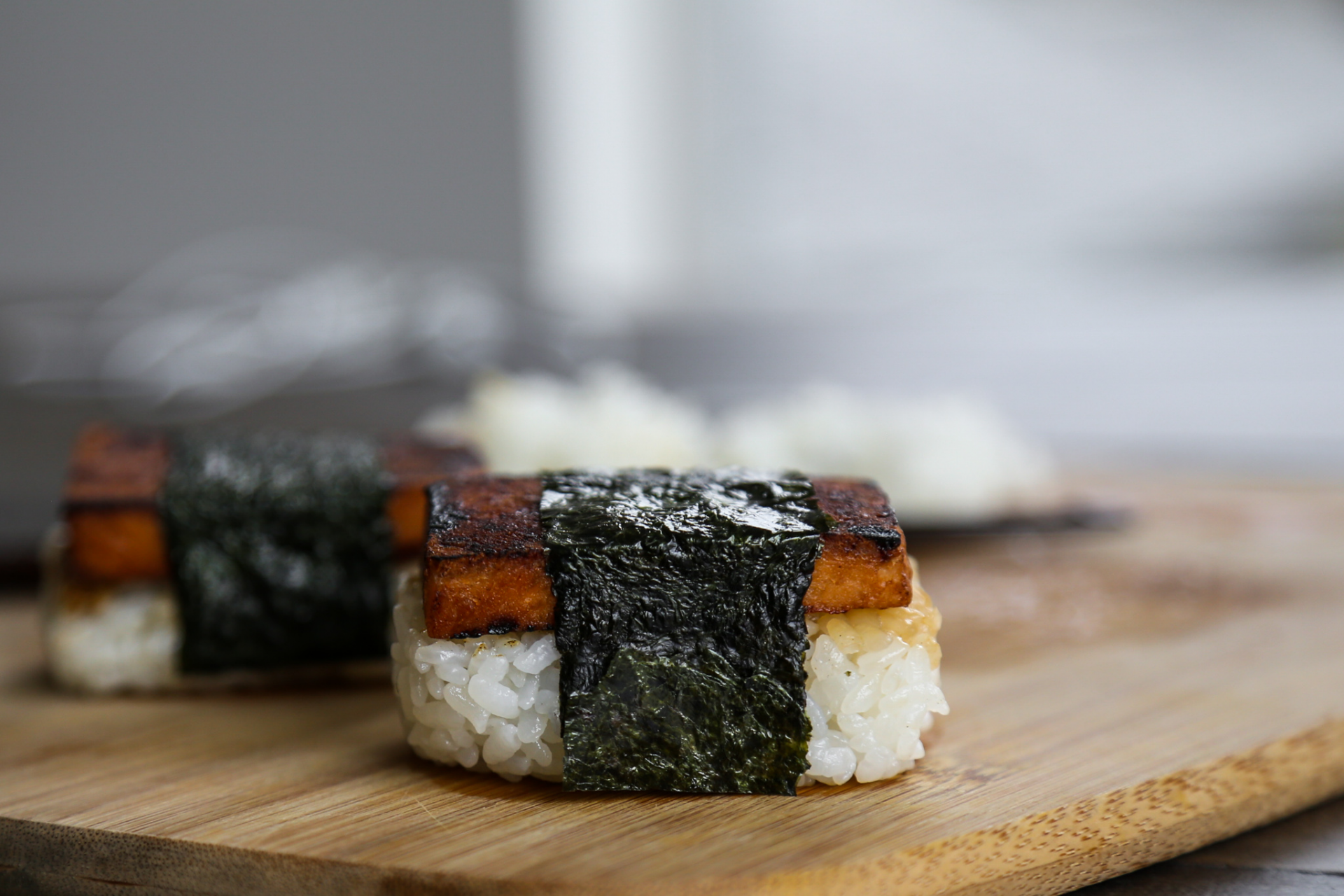 |
| Photo: Getty Images |
Masterminded by Hormel Foods, SPAM is a mystery block of pink preserved meat that’s filled with unhealthy amounts of salt and sodium nitrate to create a flavor that’s wildly tasty.
It was during World War II when canned SPAM luncheon meat became popular in Hawaii. It was relied upon as a vital source of protein paired with a truly delicious flavor.
SPAM is eaten in many ways, but in Hawaii it is best enjoyed sliced into pieces, pan fried or deep fried and served with a bed of steamed rice.
Spam Musubi is an Asian (Japanese) Hawaiian fusion.
Just like handrolls, the musubi begins with a sheet of seaweed. Next a scoop of fresh rice is pressed into a rectangular block and a teriyaki marinated slice of SPAM goes on top. The seaweed is wrapped around, blanketing the creation in goodness.
To make it easier, the SPAM Musubi is wrapped in plastic and just like those Chinese hamburgers, it’s complete.
6. Chitterlings
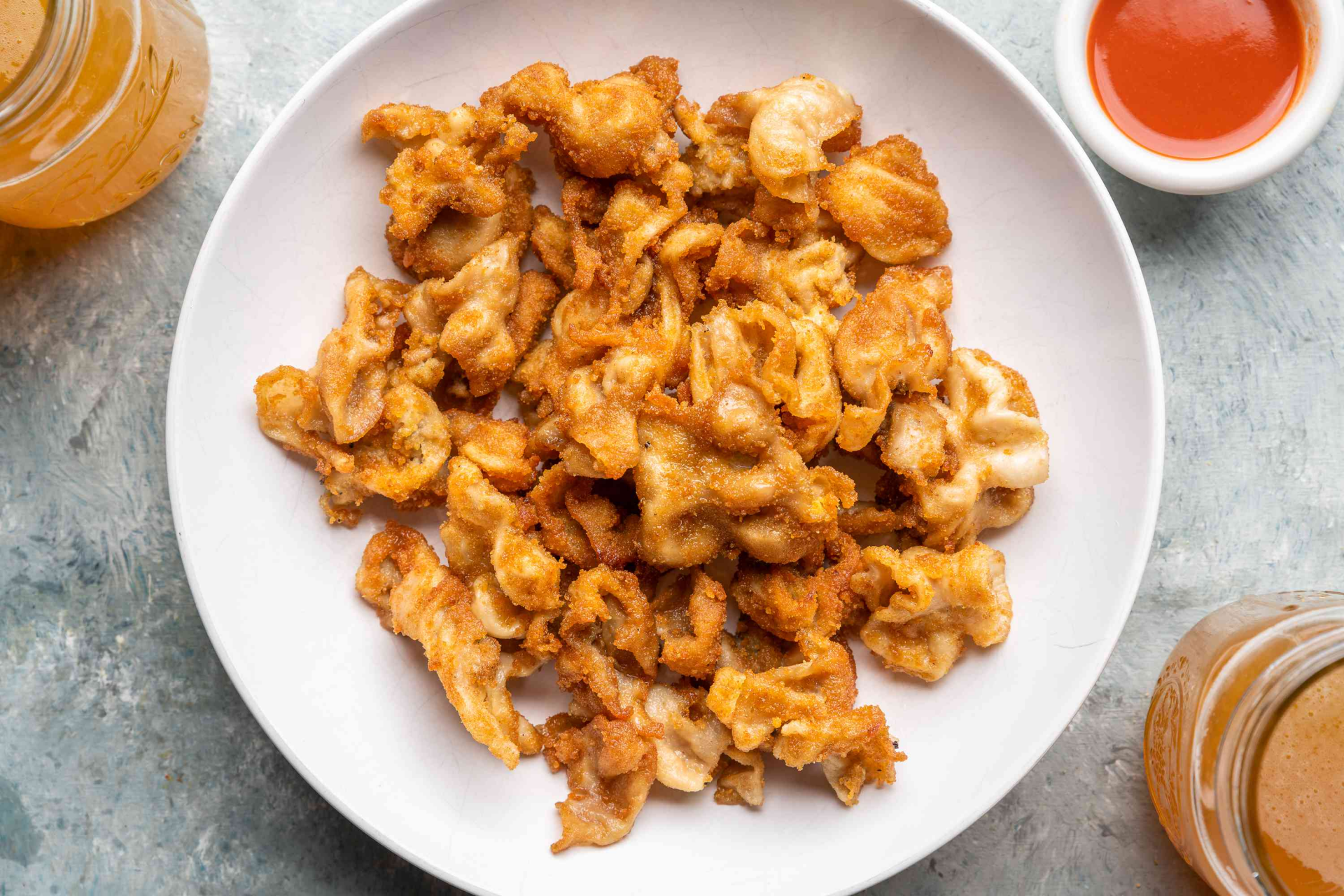 |
| Photo: The Spruce Eats |
Chitterlings, usually referred to as chitlins, are a traditional Southern food made up of the small intestines of a pig that are boiled or stewed, and sometimes even battered and fried. They are often topped with apple cider vinegar and hot sauce and served with such foods as collard greens and fried chicken. They originated during the 18th and 19th centuries when institutional slavery existed. Slave owners would feed this dish to their slaves as to not have to share the “better” cuts of the pig. If you ever plan on making them yourself, beware — they can be quite stinky when they are cooking.
7. Pickled Pigs' Feet
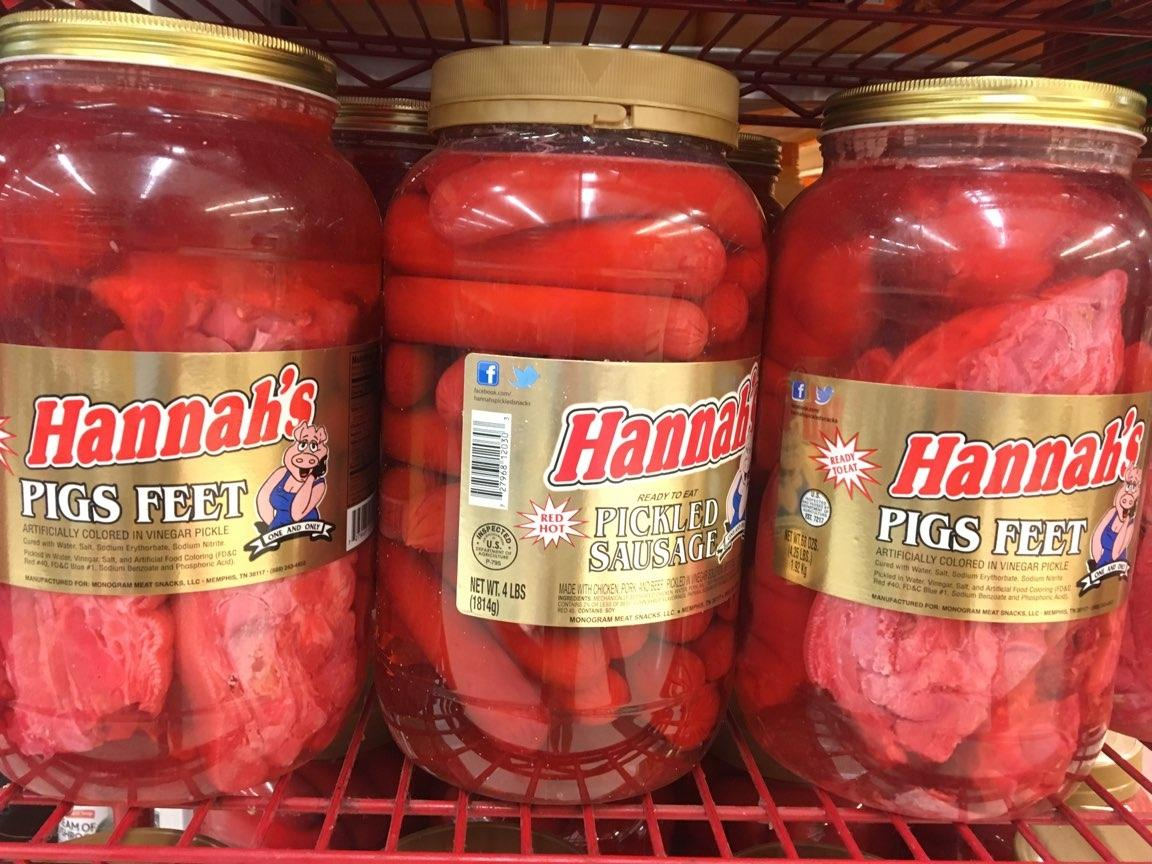 |
| Photo: GoUpstate |
Pickled pigs feet is a type of pork associated with the cuisine of the Southern United States, Mexican, Chinese, Italian, and Scandinavian cuisine.
The feet of domestic pigs are typically salted and smoked in the same manner as other pork cuts, such as hams and bacon. It is common to preserve them in a manner very similar to home canning and processes for pickled vegetables; typically a saturation of hot vinegar brine is used. Such methods allow them to be preserved without the need for refrigeration until the jar is opened.
You can even buy a jar of them in their pickling juice at some supermarkets, especially in the South. In fact, years ago, if you lived in the South, it was likely that your local ice cream truck served them as well. Lovers of this dish will suck every bit of meat and fat right off the bones.
8. Fermented Fish Heads
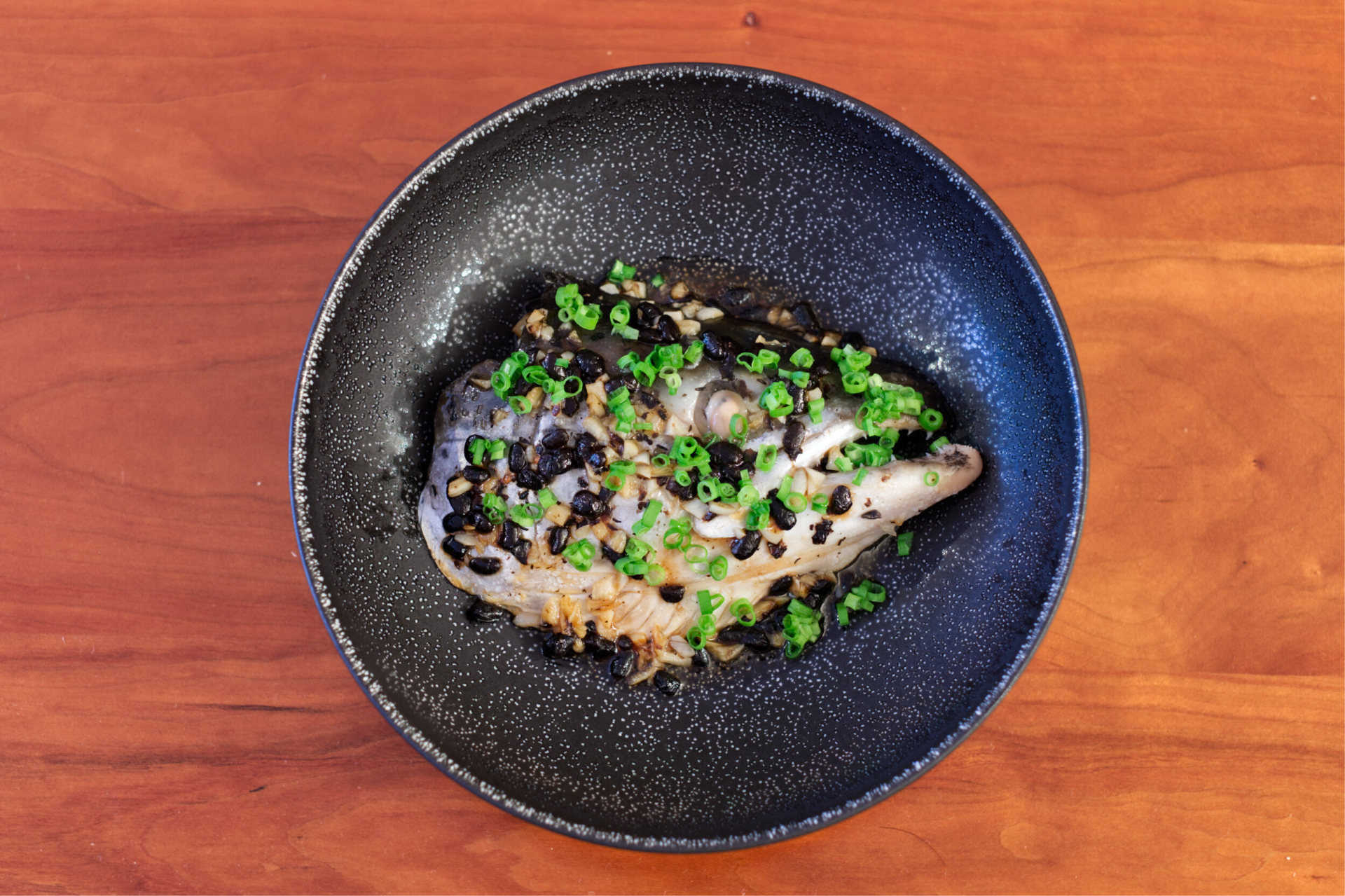 |
| Photo: Getty Images |
This Alaskan dish is also known as Stinkheads, which doesn't make it sound any more appetizing. It's a traditional dish of the Yupik people in Southwest Alaska and traditionally made out of the heads of King salmon. The heads are buried underground in special fermentation pits. They are left there to rot for a few weeks, they are removed, ready to be consumed. I'm sure you now can guess why the word “stink” is used. Unfortunately, Alaska has been suffering from an ever-growing increase in botulism, and these fish heads are a big reason why.
9. Frito Pie
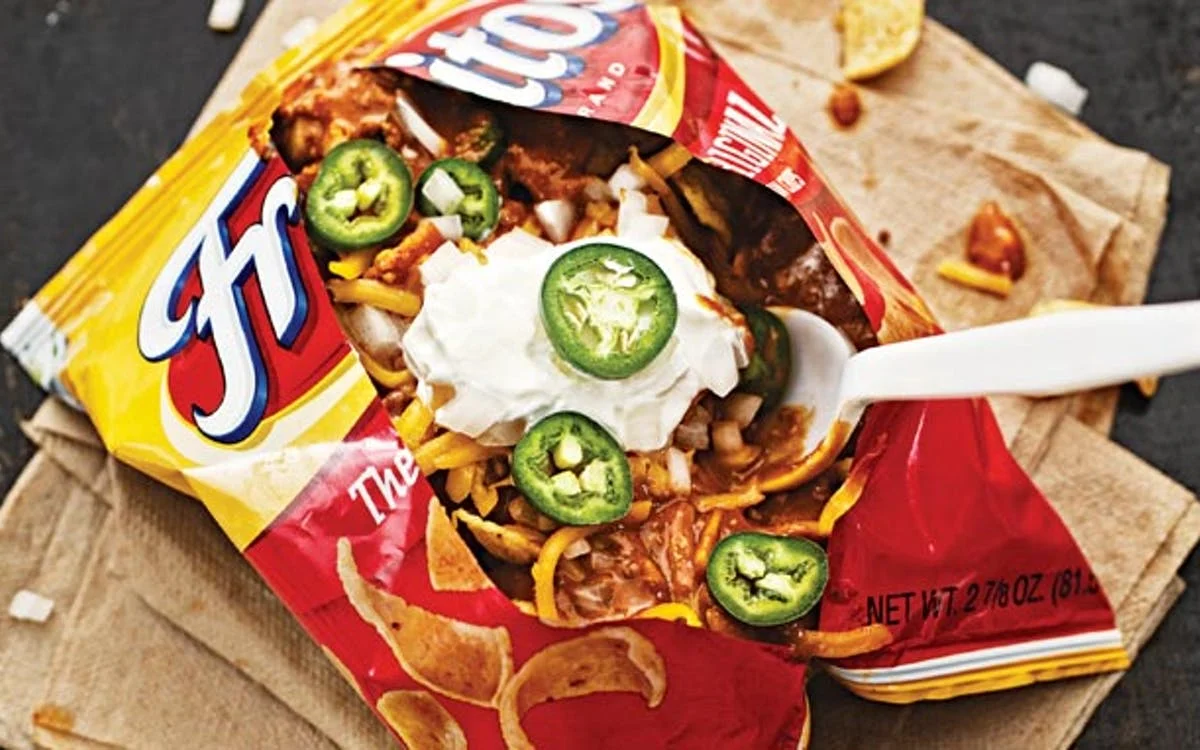 |
| Photo: Texas Monthly |
The Frito pie is not actually a pie; it's chili poured on top of Frito corn chips, garnished with chopped raw onions and cheddar cheese. Some places swap out the shredded cheese for chile con queso, and may add sour cream and pickled jalapeno slices. It's also pretty common to have the dish served in a ripped open Frito bag. There is much debate over the Frito Pie's origins. New Mexicans claim it as their own, saying it was invented by a woman in Santa Fe who decided to pour red chili into her bag of corn chips. Texans say this is false. They claim it was invented by a woman in San Antonio, who created the first pie with onions and cheese. However, according to Fritos Pie, Stories, Recipes and More, by Kaleta Doolin, it was actually created by Frito-Lay in a corporate test kitchen. Who would have thought such a battle would exist over credit dibs for this dish?
10. Ambrosia Salad
 |
| Photo: Shutterstock |
Ambrosia Salad is a classic recipe that’s hard to resist. Make with pineapple, cherries, oranges, coconut, pecans and grapes all wrapped up in fresh whipped cream and marshmallows, is a fruit salad that dreams are made of!
Ambrosia salad is the prettier cousin of the Watergate salad. It usually contains pineapple, mandarin oranges, marshmallows, coconut, sour cream and whipped cream. Depending on personal taste, maraschino cherries and/or pecans can be mixed in. In the South, ambrosia salad is considered a traditional Easter and Christmas dessert. Considered a variation of fruit salad, I think this version is a lot less healthy. It almost looks and sounds like something your five-year-old would make if you gave them full access to the kitchen.
11. Chaudin
 |
| Photo: Instagram |
Another Louisiana dish, chaudin, also known as Southern Louisiana Ponce, is a Cajun sausage that is made in the stomach of a pig. It's smoked, then cooked in a Dutch oven, and smothered in something called Holy Trinity Gravy: a roux combined with onions, bell peppers, celery, and water, broth or wine. It's served in slices over rice. Sliced, it just looks like large pieces of sausage; whole it looks like a stomach sitting right on your plate.
12. Red Eye Gravy
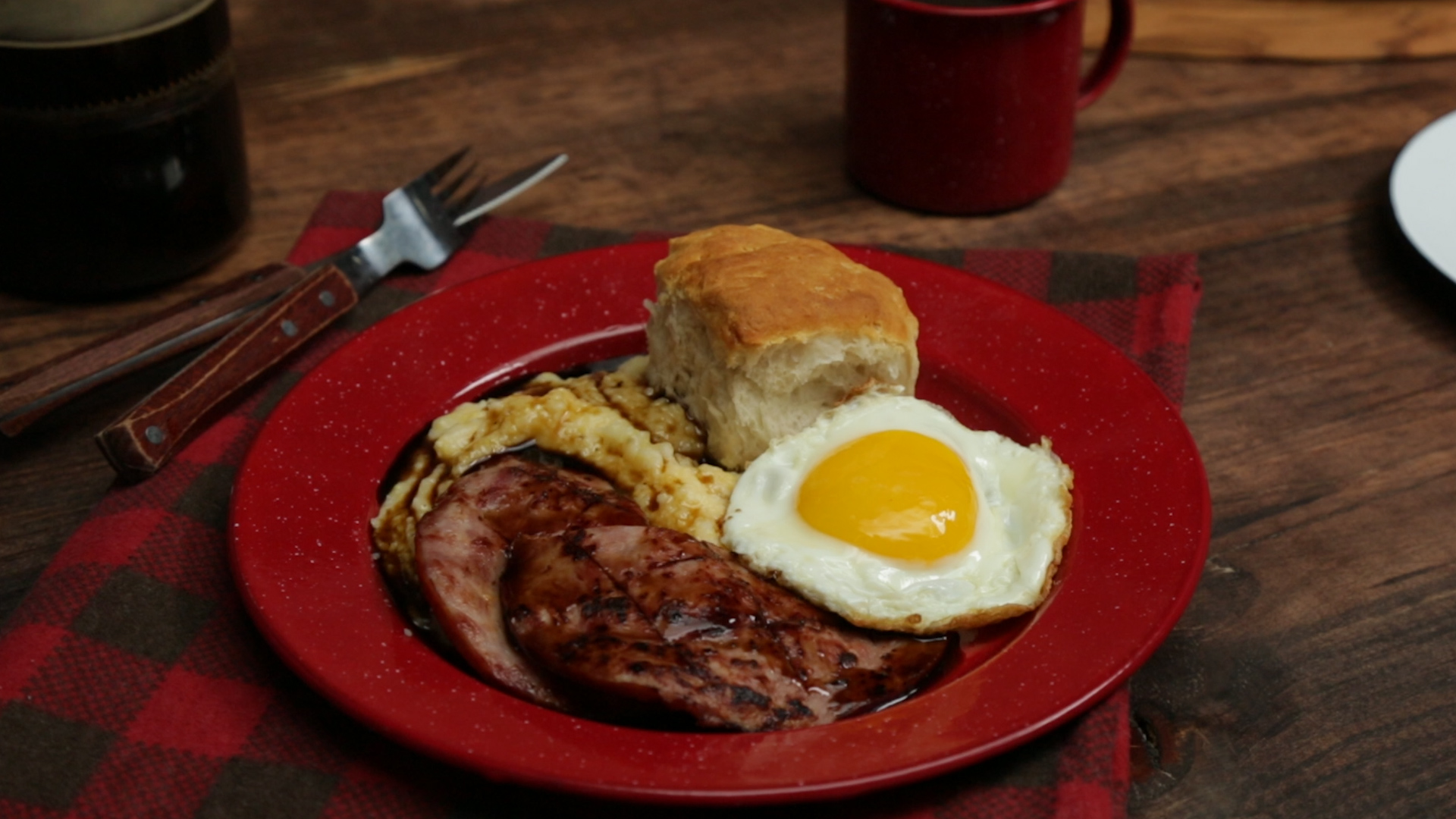 |
| Photo: Tastemade |
There are many theories on the name’s origin, and the term “red-eye gravy” is likely not related to its caffeinated character. One legend features President Andrew Jackson reprimanding his hung-over cook by asking for a country ham with gravy as red as his eyes. More likely is that the name refers to the gravy’s preparation and presentation. After pan-frying a country ham, cooks deglaze their skillets using strong coffee. The resulting mixture, which molecularly mimics oil and water, separates once poured into a bowl. As the liquids settle, the dark coffee forms a “pupil” that the ham juice surrounds like a red, glassy cornea. Add in some chile, and you’ve got an even fiercer-looking red eye.
As with most culinary crafts, Southerners serve up their ham and red-eye gravy several ways, sometimes thickened with flour or mixed with mustard and ketchup. Described by one writer as a “divine elixir,” it’s not the healthiest condiment out there, but when you’re served a slab of country ham on a biscuit the size of a cat’s head, it seems only proper to give it the topping it deserves.
13. Turducken
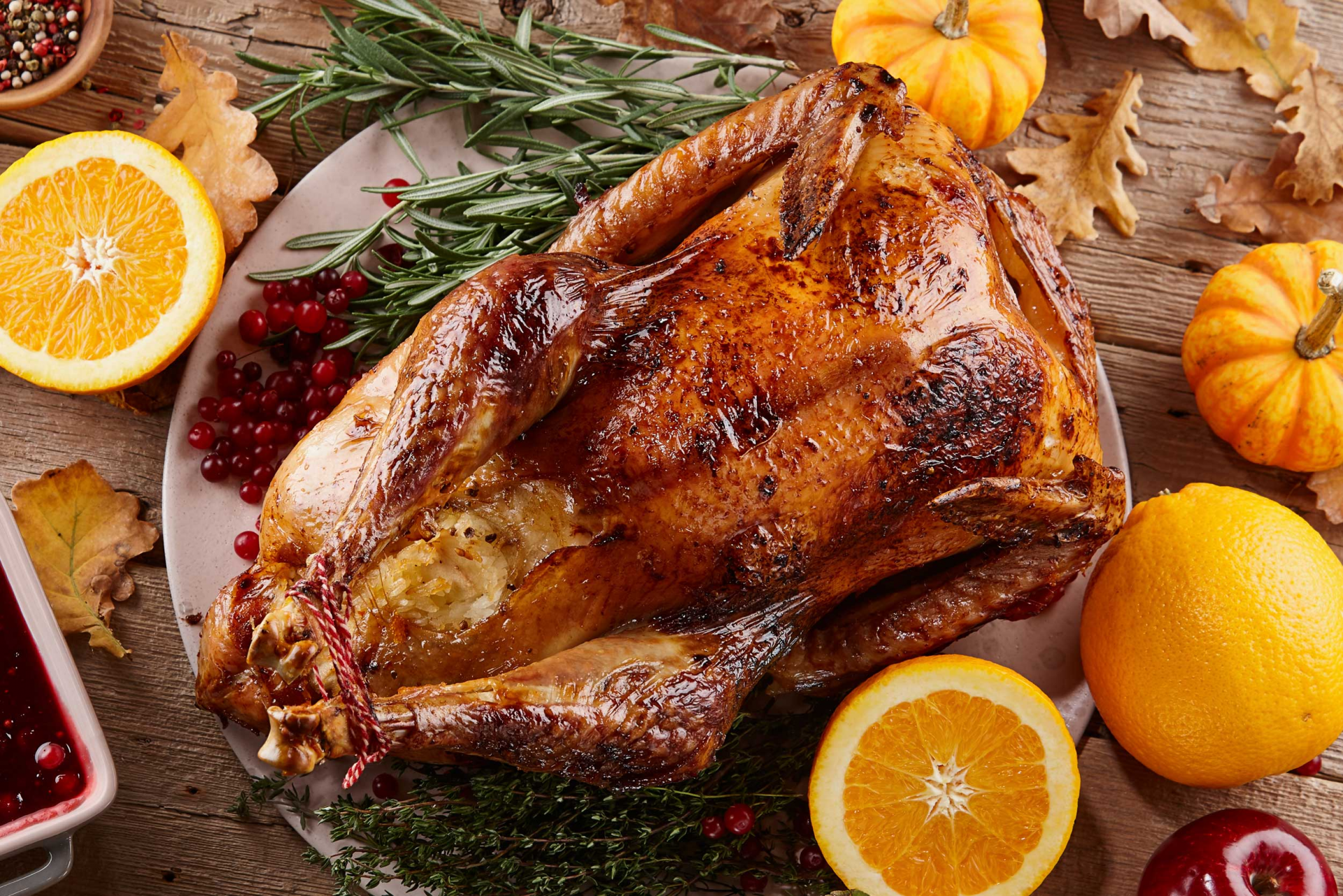 |
| Photo: Shutterstock |
If you take a deboned chicken and stuff it into a deboned duck, then take that and stuff it inside the gastric passage of a turkey, braise, roast, grill or barbecue it, then voila, you have a turducken. Each layer of poultry is often stuffed with seasoned breadcrumbs or sausage. The turducken is yet another Louisiana creation, born in New Orleans. It has become a holiday tradition in the state, as well as many other Southern states. I once went to a wedding in Alabama that took it a step further; they took the chicken stuffed in a duck stuffed in a turkey, and then stuffed it inside of a pig. Would that be a turduckenpig?
 Best Traditional USA Dishes: Top 10 Must-try American Foods Best Traditional USA Dishes: Top 10 Must-try American Foods |
14. Gizzards
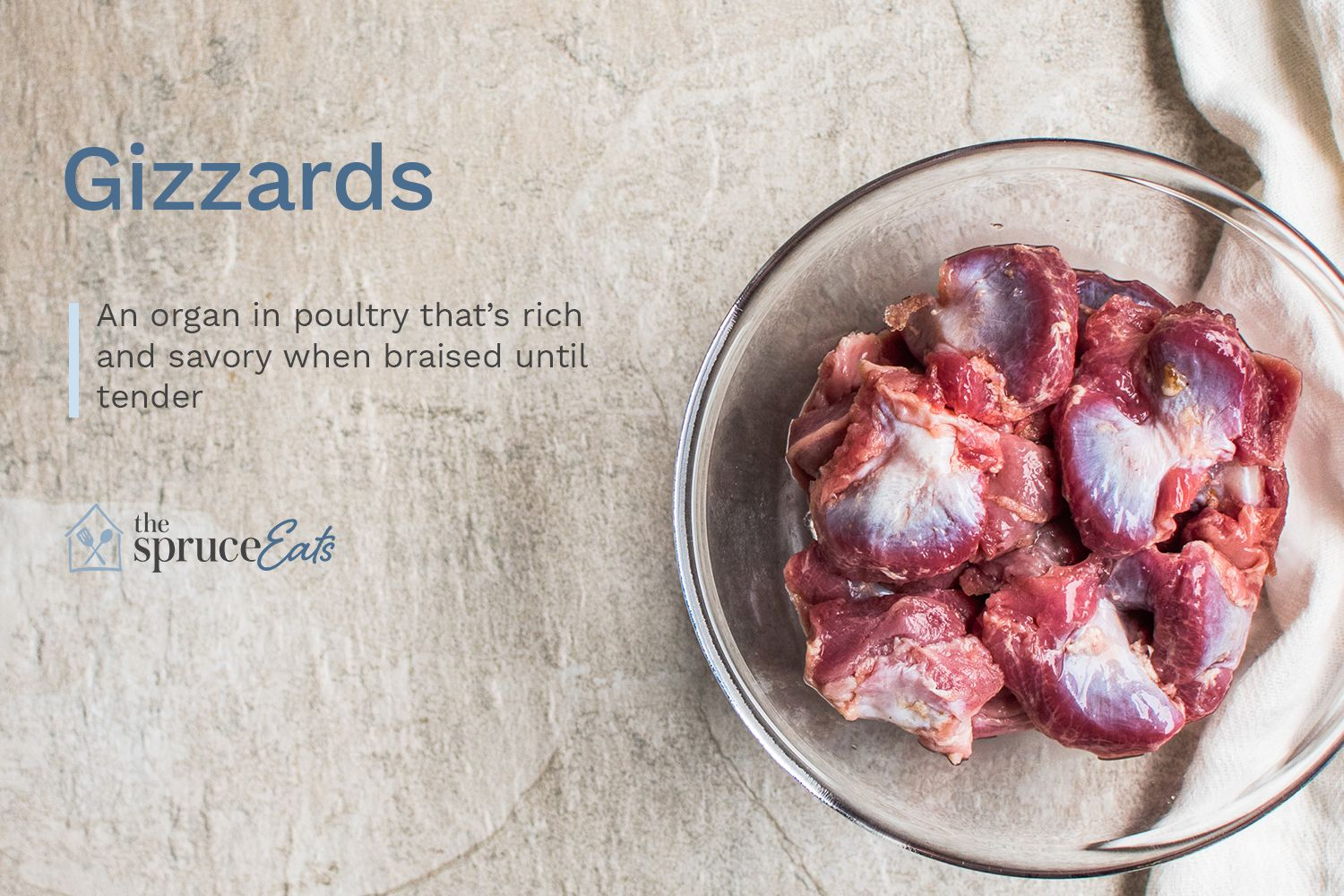 |
| Photo: The Spruce Eats |
A gizzard is a muscle found in the digestive tract of a chicken. If you've ever seen chickens pecking away at the ground, they are in fact swallowing tiny bits of grit and gravel, which travels through the chicken's digestive tract and eventually lodges in the gizzard. Then when actual food arrives, this powerful little muscle contracts, like a tiny fist squeezing a handful of gravel. The gravel grinds up the food, and the food continues on into the stomach.
The best way to cook gizzards is slowly, with moist heat, at a low temperature. That's because if they hit high heat, as in a saute pan, the connective tissues will tighten up and squeeze the gizzards into chewy little balls of shoe leather.
Instead, the goal is to cook them slowly over low heat—called braising—so that the connective tissues relax and melt away. Aim for between 180 and 205 F. Whatever you do, don't let them boil or they'll be tough.
After an hour or two of gentle braising, all that connective tissue will soften and turn into gelatin and the gizzards will be nice and tender. You can either serve them or let them cool, dry them thoroughly, then bread them (or batter them, if you prefer) and deep fry until crisp. Then serve with garlic aioli and swoon.
15. The Garbage Plate
 |
| Photo: The Spruce Eats |
16. Nutria
 |
| Photo: Trippyfood |
This dish is yet another Louisiana specialty (the fourth one on this list), specifically hailing from New Orleans. A nutria is a large, web footed, semi-aquatic rodent, also known as a river rat. They are originally from South America, but in the '40s were brought to Louisiana to control the water hyacinth population (an aquatic plant), and people also started owning them as pets. There were 20 million of these critters roaming around by the '50s, destroying crops, plants and property. The state started a big campaign to get people to eat them in order to control the populations. The meat is served in sandwiches, as burgers, or cooked in a Crockpot with seasoning and veggies. Part of that campaign was also to promote creating clothing out of their fur. It has been branded as “righteous fur” because, well, killing them is supposed to be good for the environment.
17. Jellied Moose Nose
 |
| Photo: The VALiens |
Jellied moose nose is an Alaskan delicacy. The upper jawbone of a moose is boiled in a pot of water and then chilled in cold water. At this point, all the hairs must be removed. It is then boiled again in a pot with onion, garlic, spices and vinegar, until the meat is tender. The nose then sits overnight. The next day the meat is removed and the broth is boiled again, then poured over the meat in a loaf pan and left to cool until it is jellied. It's eaten as a snack in chilled slices.
18. Deep-fried butter
 |
| Photo: The Toronto Star |
Deep-fried butter is a snack food made of butter coated with a batter or breading and then deep-fried.The dish has been served at several fairs in the US; among them, the State Fair of Texas in Dallas, Texas, and the Iowa State Fair in Des Moines, Iowa. Fried butter is a similar dish, for which recipes exist dating to the 17th century.
Abel Gonzales Jr., also known as "Fried Jesus", of Dallas, Texas, invented deep-fried butter, serving it at the 2009 State Fair of Texas in Dallas, Texas. Prepared using frozen, battered butter, it was awarded the "Most Creative food prize" at that time.
A version of deep-fried butter on a stick debuted at the Iowa State Fair 2011, which was prepared using frozen butter that is dipped in a honey- and cinnamon- flavored batter, deep-fried until browned, and then topped with a confectioner's sugar glaze. This concoction on a stick was invented by Larry Fyfe, an entrepreneur and concessionaire at the fair. Deep-fried butter has also been served on a stick at the State Fair of Texas.
In 2011 at the Orange County Fair in Costa Mesa, California, deep-fried butter was paired with chocolate-covered bacon and dubbed the "coronary combo." ABC News made a comparison regarding the pricing of this food pairing, stating, "the $10.50 price rivaled some health plans' co-payments for a visit to a cardiologist." This dish has also been served at other events and venues, such as the State Fair of Virginia and the Musikfest music festival in Bethlehem, Pennsylvania.
*****READ MORE: Top 10 Most Delicious Foods in Vietnam
19. Kraft Singles
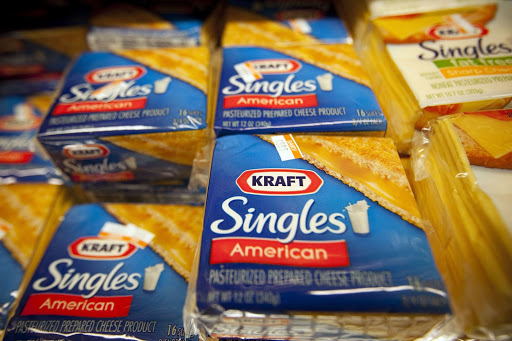 |
| Photo: Getty Images |
Kraft Singles is an American brand of processed cheese product that is manufactured and sold by Kraft Foods, introduced in 1949. Kraft individually wrapped "slices" are not really slices off a block, but formed separately in manufacturing. Kraft singles do however contain ingredients in common with cheddar cheese (pasteurized milk, cheese culture, salt, enzyme(s), annatto vegetable color) as evidenced in the ingredients list below, from the Kraft website. Those ingredients are: milk, whey, milk protein concentrate, milkfat, sodium citrate, contains less than 2% of calcium phosphate, whey protein concentrate, salt, lactic acid, sorbic acid as a preservative, cheese culture, annatto and paprika extract (color), enzymes, vitamin d3. Contains: milk.
In the US, Kraft Singles is manufactured in regular, 2% Milk, and Fat Free. In Australia, a short-lived product called Vegemite Singles combined Kraft Singles and Vegemite.
Kraft singles do not qualify for the US FDA Pasteurized Processed Cheese labeling. For this reason Kraft labels them Pasteurized Prepared Cheese Product to avoid FDA sanctions. They were calling Kraft Singles Pasteurized Prepared Cheese Food until the FDA gave them a warning in December 2002 that the product could not be legally labeled as "Pasteurized Processed Cheese Food" due to the inclusion of milk protein concentrates. Kraft complied with the FDA order by changing the label to the current Pasteurized Prepared Cheese Product.
20. Gumbo
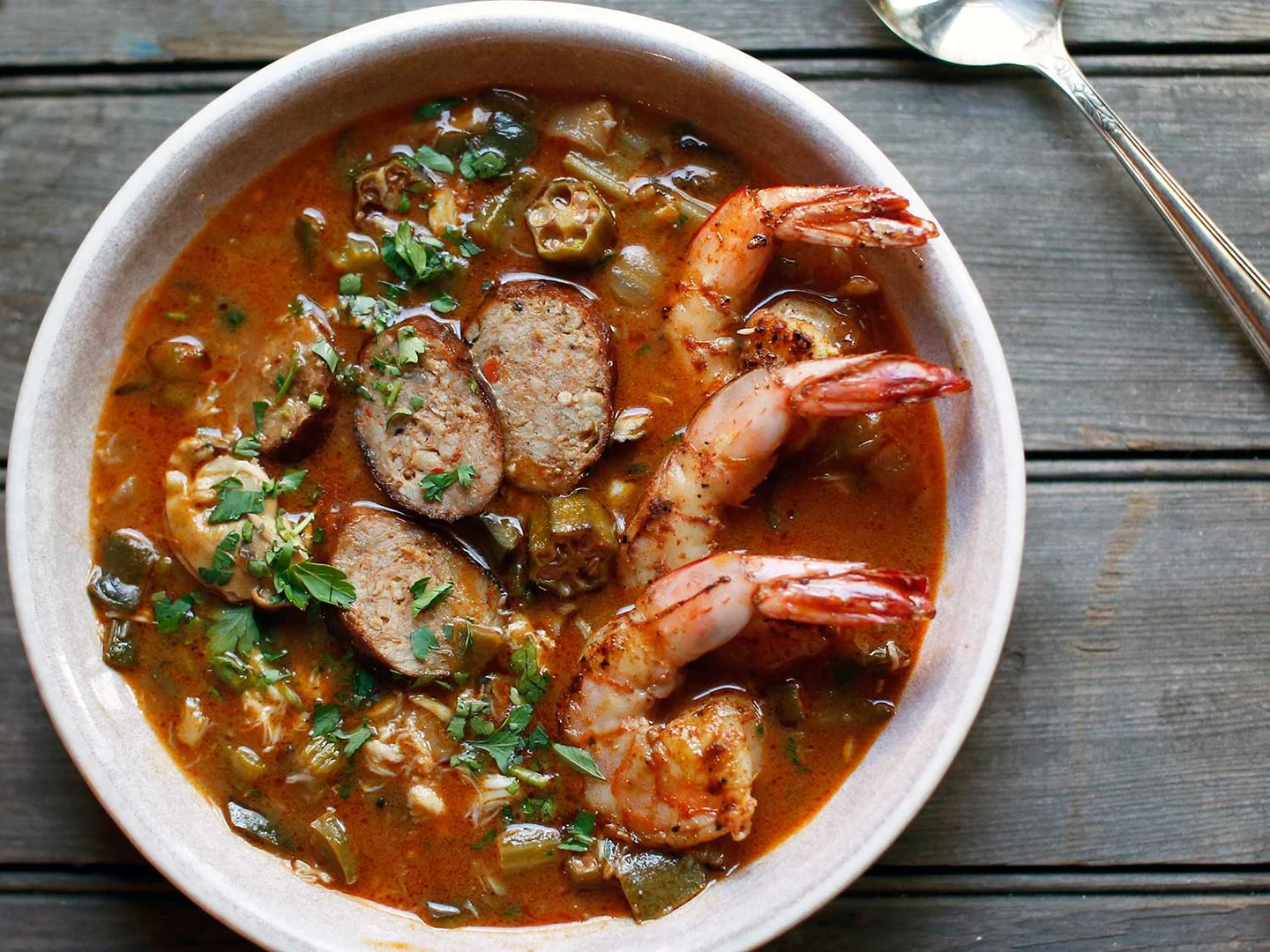 |
| Photo: Shutterstock |
Of all the dishes in the realm of Louisiana cooking, gumbo is the most famous and, very likely, the most popular. Gumbo crosses all class barriers, appearing on the tables of the poor as well as the wealthy. Although ingredients might vary greatly from one cook to the next, and from one part of the state to another, a steaming bowl of fragrant gumbo is one of life’s cherished pleasures, as emblematic of Louisiana as chili is of Texas.
Gumbo is often cited as an example of the melting-pot nature of Louisiana cooking, but trying to sort out the origins and evolution of the dish is highly speculative. The name derives from a West African word for okra, suggesting that gumbo was originally made with okra. The use of filé (dried and ground sassafras leaves) was a contribution of the Choctaws and, possibly, other local tribes. Roux has its origin in French cuisine, although the roux used in gumbos is much darker than its Gallic cousins.
 Top 10 Traditional Dishes You Must Try in Brazil Top 10 Traditional Dishes You Must Try in Brazil Have a plan to travel to Brazil this summer vacation? Check out the top 10 traditional Brazilian dishes you must try below! |
 Top 7 Most Popular Foods You Must Try in Thailand Top 7 Most Popular Foods You Must Try in Thailand Having a plan to go on a food tour in Thailand for your summer vacation? Check out these most popular Thai foods you must ... |
 TOP 10 Best Traditional Foods in China TOP 10 Best Traditional Foods in China China is famous all over the world for not only its unique history, but also the tastes of thousands of special food. Today Knowinsiders would ... |
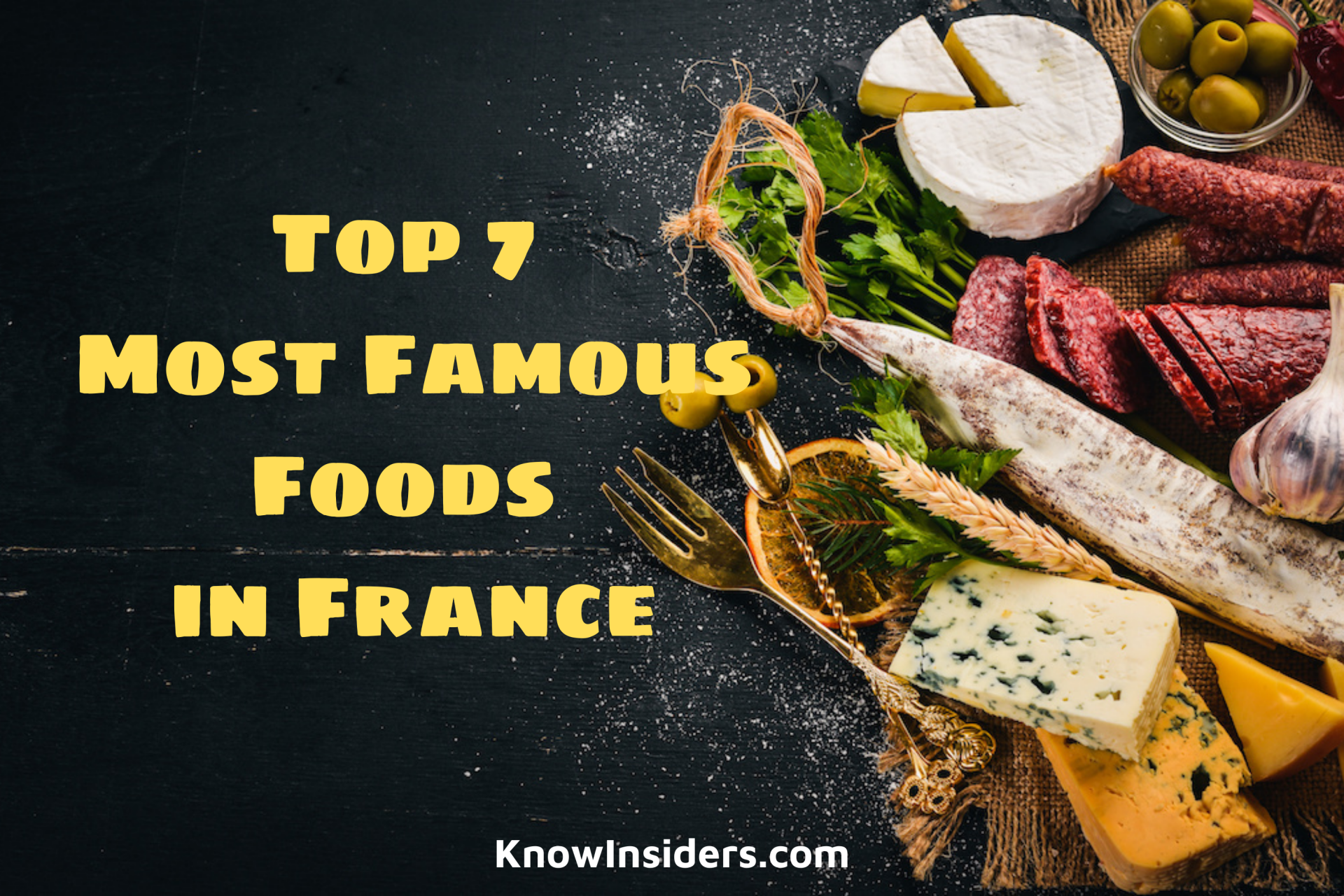 Top 7 Most Famous Foods in France Top 7 Most Famous Foods in France France has and always will be iconic for its incredible food. No matter where you go when you move to France you will find unforgettable ... |

